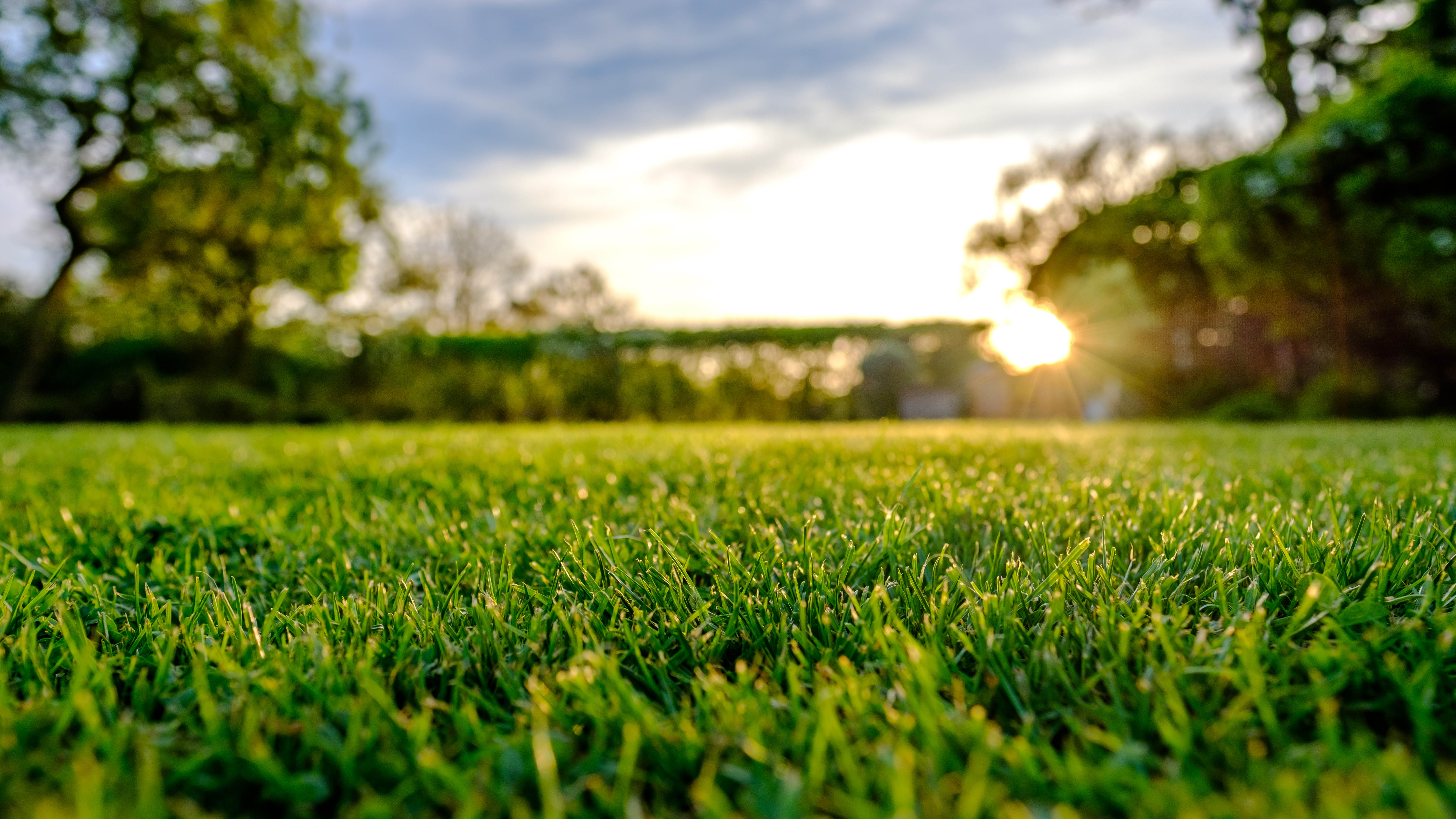Beat the heat wave — 5 tips for keeping your lawn green
Here’s how to water your lawn to keep it green during the summer

With summer here, we’re not the only ones who are feeling parched from the heat. Our lush lawns are also dehydrated from the heat wave, and when there are no signs of rain anytime soon, you'll need to know how to keep your lawn green.
While this may seem simple enough, knowing how to water your lawn the right way can make all the difference to maintaining a healthy lawn. This is especially the case if your lawn has lost its green color and bounce. Plus, watering your lawn properly will also help you use less water in the process.
If it does start to look lackluster however, you’ll probably need to learn how to plant grass seed, or how to make your grass look greener for those backyard parties. So, if you want your yard to beat the heat, follow these 5 tips for keeping your lawn green all year round.
Before you do though, make sure that you're not making any of these seven common lawn care mistakes.
1. Know what type of soil you have

Generally, the frequency and amount of water you apply to grass varies depending on the soil, type of grass and weather conditions. So it’s ideal to know what type of soil you are dealing with. If you have a sandy soil, this will absorb water quickly, and would need frequent watering. On the other hand, if your soil is clay based, it absorbs water slowly, holding water much longer, so wouldn’t require as much watering.
2. Water at the right times

While you might be tempted to water your dry lawn as much as possible, this needs to be done at the right times. Experts advise the best time to water your lawn is early morning or late evening when it’s cooler. If you water during hot periods of the day, most of the water will evaporate, and won’t absorb into the lawn. "Avoid the urge to water if it's humid," advises Craig Elworthy, founder of Lawnbright "You may think giving your lawn some water will help - but your lawn is actually fine. When it’s dry, there’s an imbalance in water between your lawn and the air, but in humid air there’s no imbalance, and water in the soil is retained. So hold off on watering unless your lawn needs it."
3. Soak the lawn with a sprinkler system

Ensure you soak the lawn thoroughly until you see small puddles of water on the surface. "The best way to water your grass in hot conditions is to use a sprinkler system and really soak the lawn,” agrees Jonathan McQuire, gardener. “It takes an awful lot of water to keep grass healthy in the heat, and you're sometimes better off using the water on your beds, as flowers aren't as hardy and are often more expensive. Even if your grass looks like straw, it will recover.” There are many affordable sprinkler systems like this GOLDFLOWER Garden Sprinkler ($14, Amazon) to best water your lawn.
Sign up to get the BEST of Tom's Guide direct to your inbox.
Get instant access to breaking news, the hottest reviews, great deals and helpful tips.
4. Go deep

Ideally, your soil should be moist 5 to 6 inches beneath the soil’s surface, however, deep watering extends this to 7 to 8 inches deep. The idea behind deep watering is to encourage deep root growth which keeps the roots cooler and stronger, protecting your lawn during heat stress. Canyon Hydroseeding recommends deep watering your lawn once a week, or twice a week if the temperature rises to above 100°F.
5. Avoid water run-off

If you’re applying more water than what the lawn can absorb, the excess will run off into gutters or elsewhere. To avoid wasting water — especially important if you're in a drought-stricken area — it’s advised to water in short intervals of about 10-15 minutes. Either turn off the water or move the sprinkler to allow the water to soak into the lawn properly before turning it back on again for another 15 minutes.
6. Leave your grass long

Despite the urge to mow your lawn for those summer gatherings, leave your grass long in a heatwave. “One way to keep your grass healthy is to anticipate the warmer weather and avoid cutting your grass too short. Longer grass is hardier and more likely to survive the heat,” McGuire says. “You can also leave some of the grass cuttings on top of the lawn to form a fine mulch that will protect the roots and help retain moisture. Although, make sure the grass isn't totally covered, as this can kill it." Long grass also establishes deeper roots for a healthy lawn. Just be sure not to make these 7 lawnmower mistakes.
7. Aerate your lawn

Just as your lawn needs water it also needs oxygen to grow well. Aerating your lawn will aid compaction, allowing more oxygen to reach the roots. At the same time aeration also improves drainage, allowing more water to be absorbed. An aerated lawn will make watering more efficient, as water is more likely to be absorbed deeper into the soil, rather than sitting on the top or running off. You don't need any special equipment to aerate a lawn, a simple garden fork will do.
How often should I water my lawn in a heatwave?

The experts recommend watering twice a day in drought conditions. However, it’s always best to monitor your lawn and make the necessary adjustments, as no lawn is the same. "Check for signs of heat stress. Grass will turn a shade of silver before it goes brown and dormant," suggests Elworthy, "if you see a silver tone on your lawn make sure to hit it with some water, as it’s under heat stress and will soon go dormant." In addition, if the lawn doesn’t appear to dry out quickly between watering times, you can stretch the intervals in between.
If you live in an area with water restrictions or have a high water bill, you may not be able to — or want to — water your lawn as often. In that case, it's best to replace grass with drought-tolerant plants. Be sure to check out our other water-saving tips for ways to use less water and lower your bill.
How much water should I use?
Try not to overwater your lawn as this could encourage weed growth, and risk of mold and disease. "Make sure you’re getting between 1-1.5 inches of water on the lawn each week", advises Elworthy. "A simple rain gauge is all you need. Some even use a coffee mug and a ruler. It doesn’t have to be overly precise." Another way of checking this is by probing the soil with a stiff metal rod. The rod should move easily through the wet soil and then stop once it gets to the dry soil.
You can also learn how to stripe your lawn to make it look bigger. But you need to know more than how to plant grass seed to make your grass greener and how to lay sod to upgrade your lawn.
You can also read about how much you should water your lawn to keep it green, according to experts.
If you're looking at other beat the heat tips, you can also check out the top 7 deals to help you stay cool and beat the heat and you can read about how my iPad let me work while beating the heat wave.

As the Homes Content Editor, Cynthia Lawrence covers all things homes, interior decorating, and garden-related. She has a wealth of editorial experience testing the latest, ‘must-have’ home appliances, writing buying guides and the handy ‘how to’ features.
Her work has been published in various titles including, T3, Top Ten Reviews, Ideal Home, Real Homes, Livingetc. and House Beautiful, amongst many.
With a rather unhealthy obsession for all things homes and interiors, she also has an interior design blog for style inspiration and savvy storage solutions (get rid of that clutter!). When she’s not testing cool products, she’ll be searching online for more decor ideas to spruce up her family home or looking for a great bargain!
